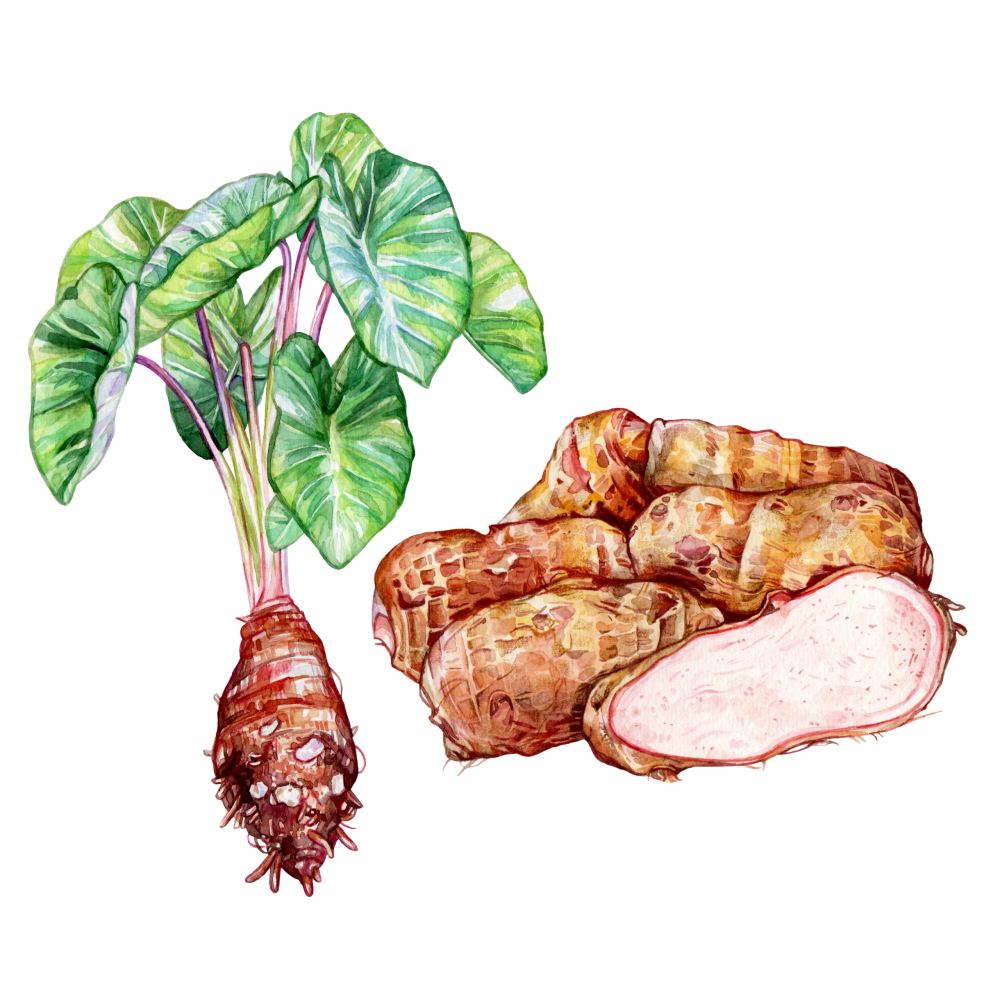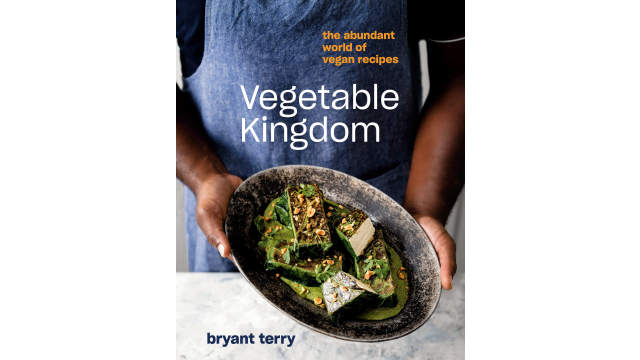Taro

Latin name: Colocasia esculenta
Other names: colocasia
Uses: staple food (root vegetable, green vegetable)
What is taro?
Taro is a tropical root vegetable used as a staple starch. It’s a member of the arum family, a close relative of the garden plant called elephant ears. Their hairy brown corms, which measure 6 inches in diameter and 4 pounds on average, resemble … a different part of the elephant.
Why is taro healthy?
Loaded with fiber, manganese, and vitamin E, taro is an excellent substitute for other starchy vegetables. Its numerous health benefits include reducing risk factors for diabetes, supporting heart and eye health, and boosting immunity.
What does taro taste like?
Taro has a floury texture like russet potatoes and an earthy, sweet flavor (like other root vegetables) with a delicate nuttiness. The petioles and leaves have a grassy, vegetal flavor with an almost metallic twinge, like amped-up spinach.
How do I use taro?
Taro loves being fried, either as chips or in chewy cakes of pounded paste. Taro leaves and petioles must be cooked to dissolve the needle-like calcium oxalate crystals, which are toxic and can irritate the skin and mouth. Taro leaf is traditionally prepared with dried fish or pork, but feel free to sub in your favorite protein — its spinach-like flavor pairs well (and is usually cooked) with coconut milk, lime juice and lemongrass, chile, and curry spices.
What does taro pair well with?
As a floury carb, it’s best when combined with aggressive flavors like curry spices, ginger and garlic, cilantro, and chile. Because of its nutty sweetness, it’s also delicious in desserts with tropical Asian ingredients and flavors — think coconut milk, vanilla, tapioca, and red bean. Taro plays well with agar agar for jellies, and can be used in cake and pie recipes.
Where does taro grow?
Taro is thought to have originated in India, but eventually spread throughout the tropics of Africa, the Pacific Islands, and South/Southeast Asia, where it’s still widely grown. Taro needs warmth and high humidity, thriving best in moist soils, but can be grown in containers in cooler climates.
How to buy taro:
When buying taro, look for corms that are heavy for their size, with no mushy or black spots. The leaves are usually sold dried or frozen.
Fun taro fact:
You might see purple boba or desserts labeled as taro-flavored, but prepared taro isn’t purple. The raw flesh of the corm is very pale lavender with darker flecks, but cooks to pale grey. The starchy purple substance is usually ube (a type of yam) or Okinawan sweet potato. The three root vegetables are in three totally different plant families but can be used somewhat interchangeably.




